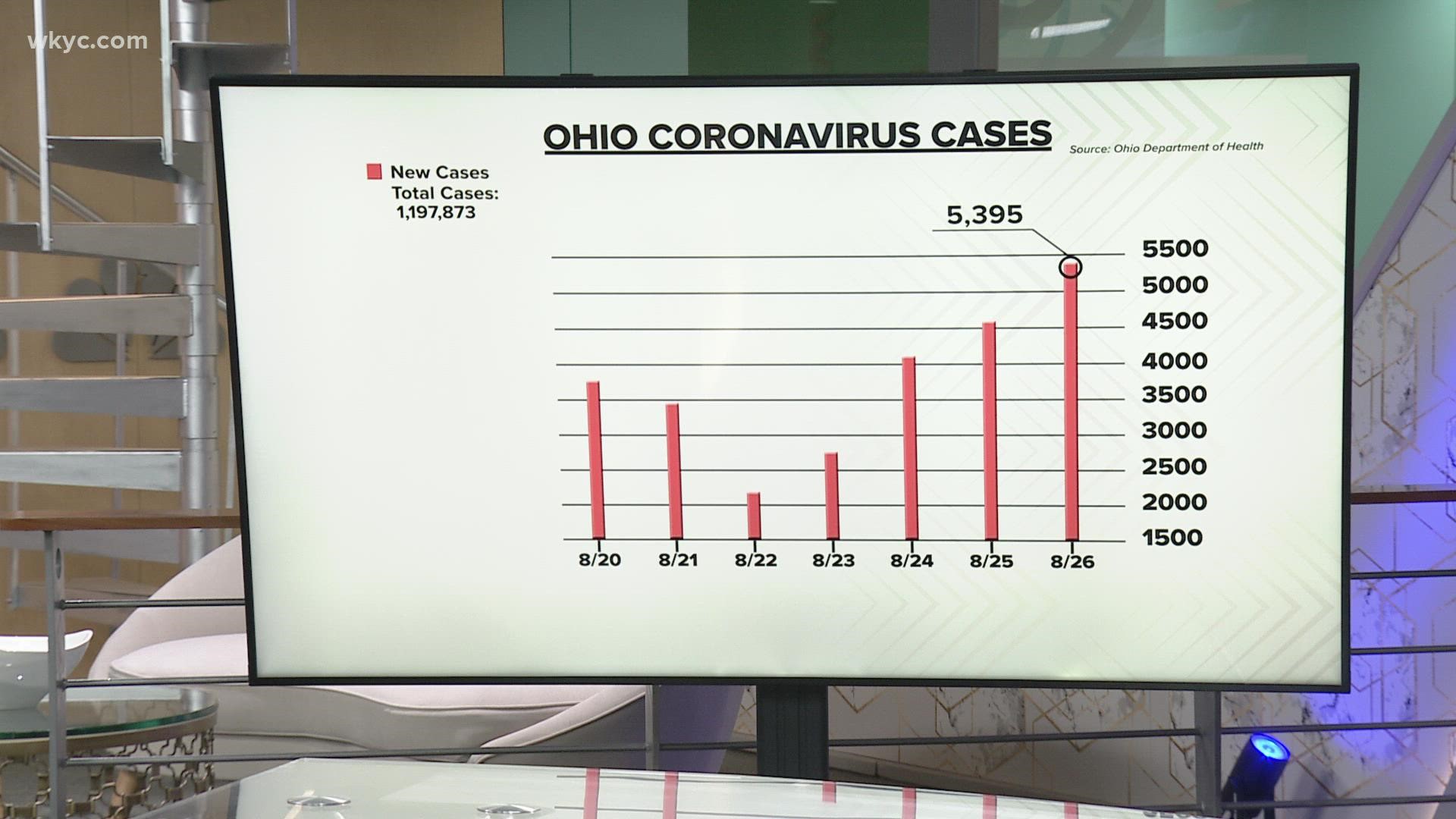COLUMBUS, Ohio — Health officials are growing concerned about the ability of Ohio hospitals to keep up with the current surge in COVID-19 cases, especially as more healthcare staff leave the profession.
Ohio Department of Health Director Dr. Bruce Vanderhoff addressed the state Friday, painting a familiar picture, though one not seen since the winter months.
On Thursday, 5,395 new COVID-19 cases were reported; a high Vanderhoff said we saw last January. Those figures are about 10 times higher than the numbers we just saw a month ago.
In addition to the jump in cases, more people - and younger people - are being hospitalized with the virus. According to the Ohio Hospital Association, one in 10 current patients in Ohio hospitals and one in six patients in the ICU are there battling COVID-19.
Vanderhoff said that in early July, hospitalizations were relatively stable, even decreasing slightly, with patients hovering in the 200s. However, later in the month, there was an increase and as August has progressed, the spike has gotten much sharper.
On July 9, Vanderhoff said there were 200 COVID-19 patients in Ohio hospitals. On Thursday, that number was more than 2,000.
"These are troubling facts," Vanderhoff said.
He noted that unvaccinated Ohioans are taking up the bulk of the COVID-19 patients filling beds.
Vanderhoff said that as the highly contagious delta variant spreads, people of all ages are getting sicker quicker and are requiring hospital care. He noted that vaccinations are our best protection and are our best bet at "declawing" the virus and alleviating future pressure on our hospitals.
Earlier this week, the state crossed the threshold of 60% vaccinated, which Vanderhoff called an important milestone. As more Ohioans gain robust immunity from the vaccine, it reduces the opportunity for the virus to spread, mutate and inflict medical harm.
Joining Vanderhoff Friday were medical professionals representing three different regions of the state:
- Richard P. Lofgren, MD, President and Chief Executive Officer, UC Health
- Andrew Thomas, MD, Chief Clinical Officer, The Ohio State University Wexner Medical Center
- Robert Wyllie, MD, Chief Medical Operations Officer, Cleveland Clinic
All three detailed a landscape similar to the whole of the state.
Cleveland Clinic Chief Medical Operations Officer Dr. Robert Wyllie said hospitals in the northeastern part of the state are at about 75-85% capacity and climbing every day.
These facilities are facing a unique problem, as they were already seeing a high number of patients before the recent rise in COVID-19 began. Wyllie said this could be due to people putting off seeking care earlier in the pandemic, causing certain diseases to be caught later than what they normally may have and in turn driving patients to the hospital more often.
This influx in patients coupled with the new spike in COVID-19 is stressing the system.
The Ohio State University Wexner Medical Center Chief Clinical Officer Dr. Andy Thomas said that one his region's major healthcare systems has four hospitals that are unable to do elective procedures - these are procedures that are medically necessary, but could be delayed a few weeks.
"It feels like where we were in mid-December," he said.
However, the bigger concern among health professionals, is that while capacity wanes, so does staffing.
The three health leaders all noted an exodus in healthcare workers, saying staff are burning out.
UC Health President and Chief Executive Officer Dr. Richard P. Lofgren explained that during the last surge, the workforce really rose to the occasion, and stretched themselves thin. The industry is now losing people who are opting out of the field as they are simply too tired and have no stretch left.
Vanderhoff said one way to help alleviate strain on the state's hospitals is to utilize the state's alternative testing sites unless you are seeking medical advice.
COVID-19 testing is available at most major pharmacies, through local health departments and rapid testing is now available at many local libraries. These rapid tests can be conducted from home with someone guiding you through the process remotely.
For more information on the state's COVID-19 mitigation strategy, click here.

